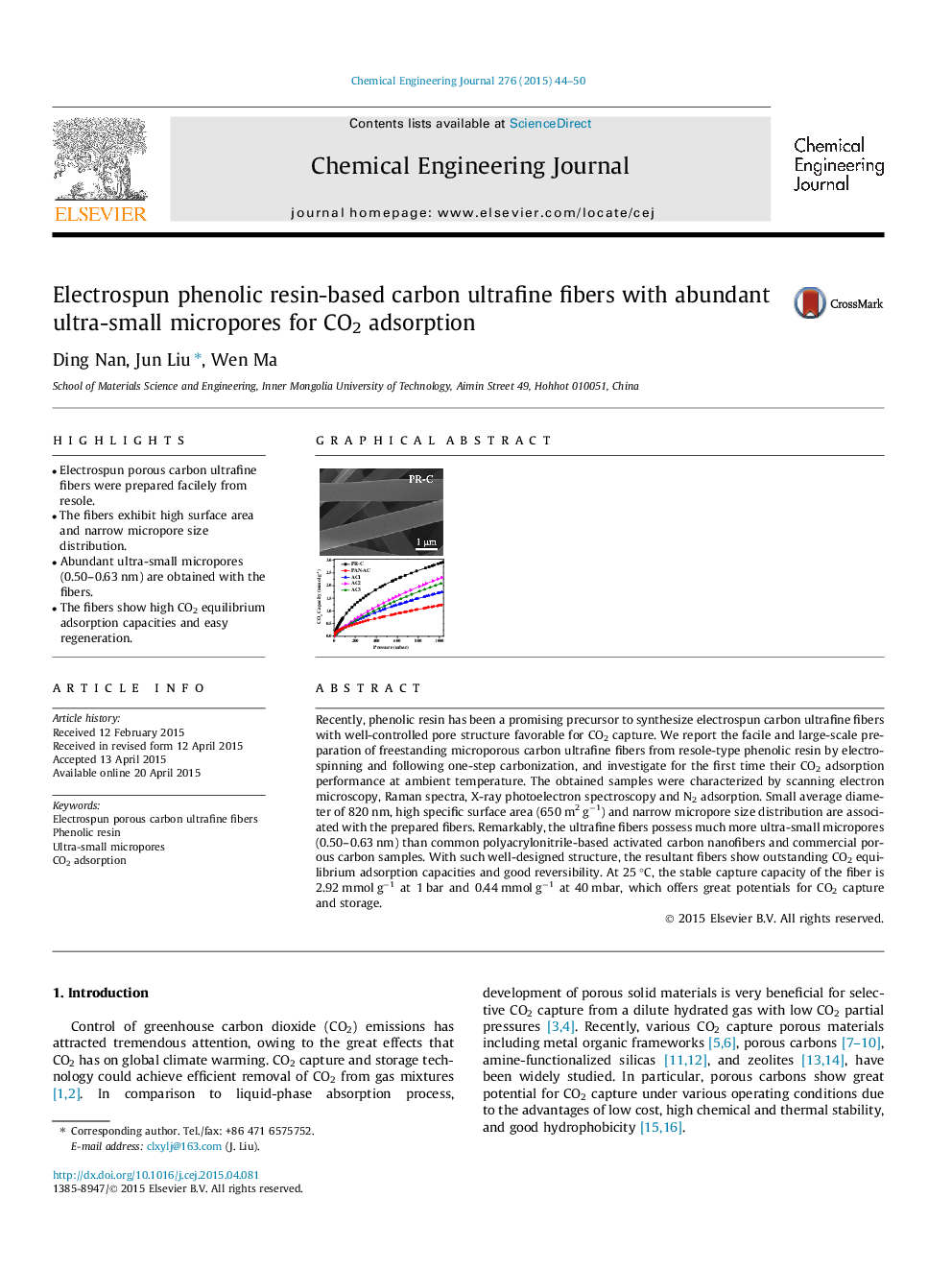| کد مقاله | کد نشریه | سال انتشار | مقاله انگلیسی | نسخه تمام متن |
|---|---|---|---|---|
| 146213 | 456364 | 2015 | 7 صفحه PDF | دانلود رایگان |

• Electrospun porous carbon ultrafine fibers were prepared facilely from resole.
• The fibers exhibit high surface area and narrow micropore size distribution.
• Abundant ultra-small micropores (0.50–0.63 nm) are obtained with the fibers.
• The fibers show high CO2 equilibrium adsorption capacities and easy regeneration.
Recently, phenolic resin has been a promising precursor to synthesize electrospun carbon ultrafine fibers with well-controlled pore structure favorable for CO2 capture. We report the facile and large-scale preparation of freestanding microporous carbon ultrafine fibers from resole-type phenolic resin by electrospinning and following one-step carbonization, and investigate for the first time their CO2 adsorption performance at ambient temperature. The obtained samples were characterized by scanning electron microscopy, Raman spectra, X-ray photoelectron spectroscopy and N2 adsorption. Small average diameter of 820 nm, high specific surface area (650 m2 g−1) and narrow micropore size distribution are associated with the prepared fibers. Remarkably, the ultrafine fibers possess much more ultra-small micropores (0.50–0.63 nm) than common polyacrylonitrile-based activated carbon nanofibers and commercial porous carbon samples. With such well-designed structure, the resultant fibers show outstanding CO2 equilibrium adsorption capacities and good reversibility. At 25 °C, the stable capture capacity of the fiber is 2.92 mmol g−1 at 1 bar and 0.44 mmol g−1 at 40 mbar, which offers great potentials for CO2 capture and storage.
Figure optionsDownload as PowerPoint slide
Journal: Chemical Engineering Journal - Volume 276, 15 September 2015, Pages 44–50